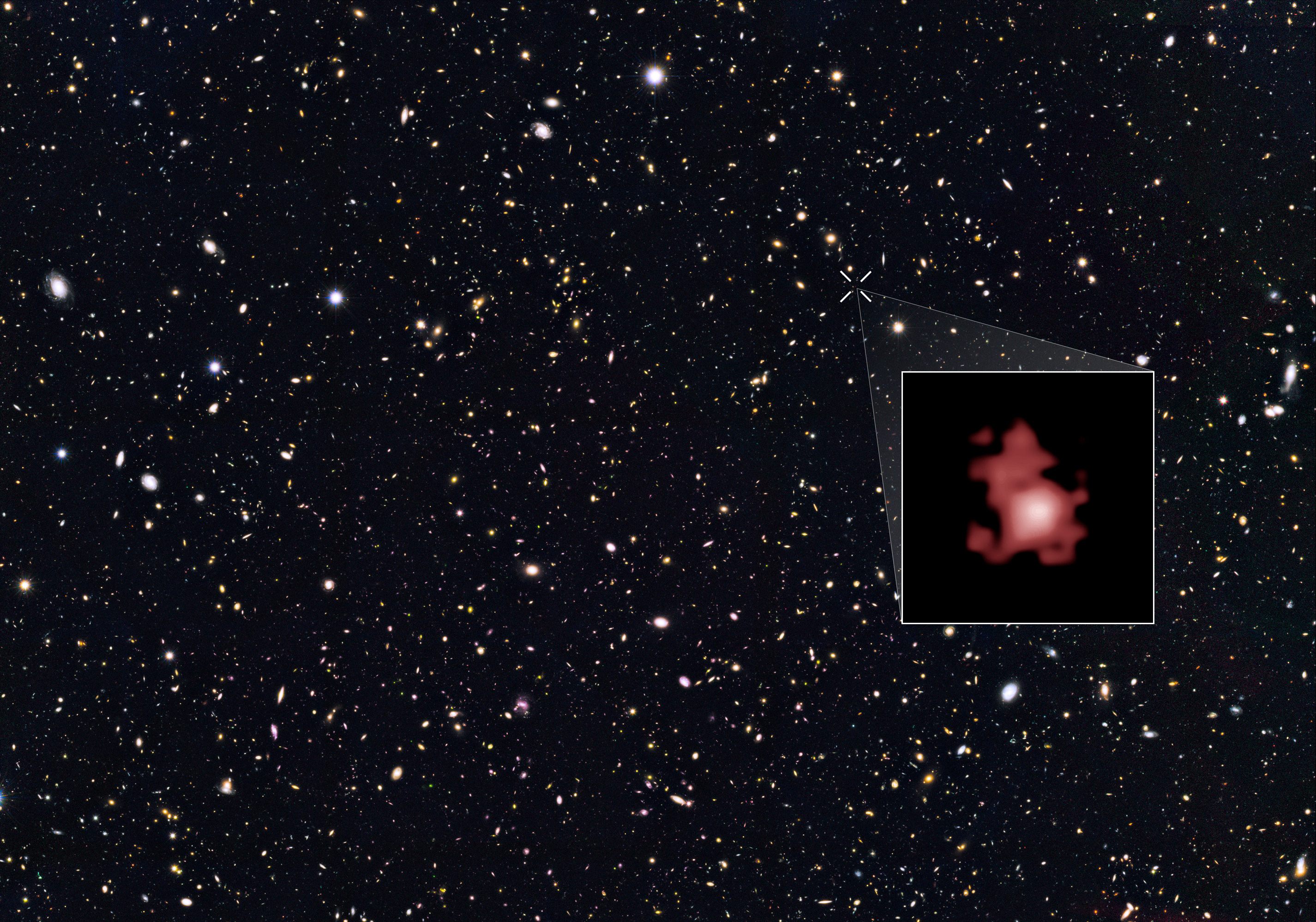Astronomers Eye The Most Distant Galaxy Ever Seen
The galaxy existed just 400 million years after the Big Bang.

The galaxy in an image provided by scientists. (Photo: NASA, ESA, and P. Oesch, Yale University)
Astronomers have captured the most distant galaxy ever seen, one that existed just 400 million years after the Big Bang, when the Universe was in its infancy.
The galaxy, named GN-z11 and captured on the Hubble Space Telescope, is estimated to be about 13.4 billion light-years away, or around 7,770,000,000,000,000,000,000 miles.

That distance is well beyond old records, and with the latest finding, astronomers say, they might have reached the limits of just how far the Hubble can see.
“We’ve taken a major step back in time, beyond what we’d ever expected to be able to do with Hubble,” says Pascal Oesch, the study’s lead author. “We managed to look back in time to measure the distance to a galaxy when the Universe was only three percent of its current age.”
The astronomers measured the age of the galaxy by measuring a phenomenon known as redshift, or how visible light rays change from blue to red.
They measured the change, however, against a slightly less reliable light wave spectrum than is standard, a departure in technique that led at least one competitor to pronounce his skepticism.
The spectrum used by Oesch was “noisier and harder to interpret,” Richard Ellis, an astronomer at the European Southern Observatory, told the Associated Press, adding that the galaxy would have to be unusually bright to still be visible. Ellis is the astronomer behind the previous galaxy record holder for distance.
Such sentiments probably aren’t bothering Oesch and co-authors, though, who were jubilant on Thursday, when the findings were announced.
“Our spectroscopic observations reveal the galaxy to be even further away than we had originally thought,” says Gabriel Brammer, an author of the study.









Follow us on Twitter to get the latest on the world's hidden wonders.
Like us on Facebook to get the latest on the world's hidden wonders.
Follow us on Twitter Like us on Facebook